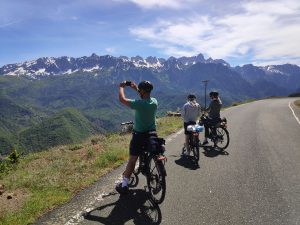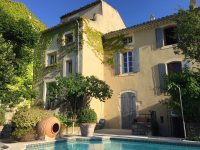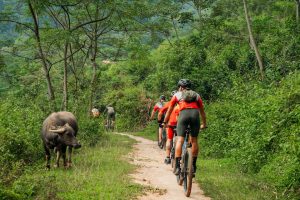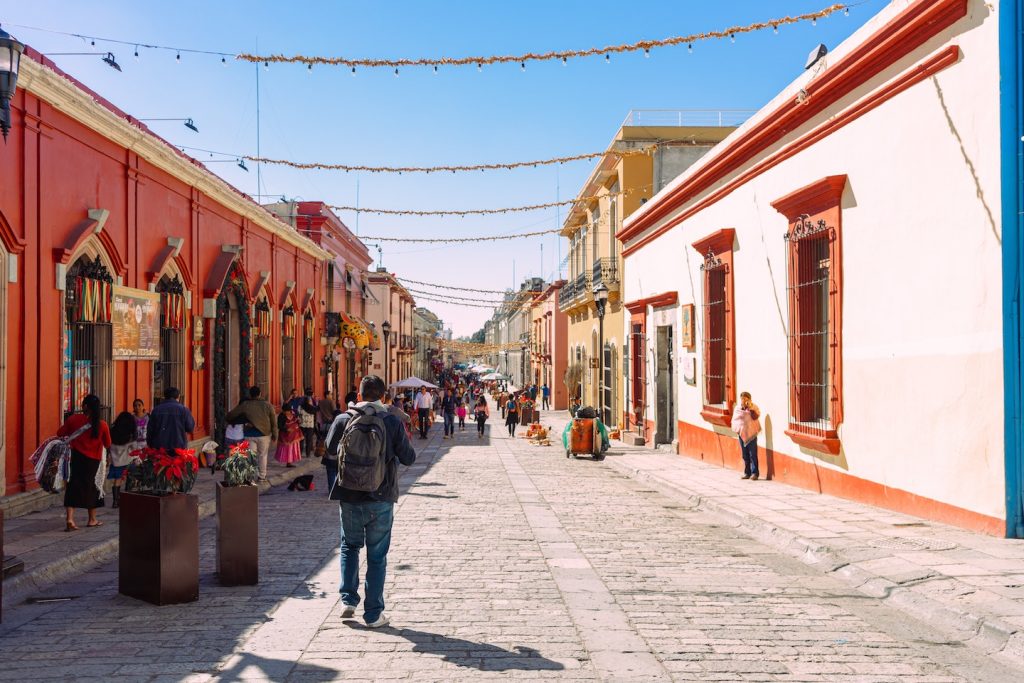Serra de Monchique has one of the most fascinating climbs in the Algarve, Fóia, the highest peak in the region, as well as several mountain biking and downhill trails, some of which are more difficult, due to their steep slopes, but all of which are uniquely beautiful.
Located in the far south of Portugal, the Algarve region offers exceptional conditions for cycling and is increasingly sought after by enthusiasts of the sport, from beginners to regular or highly experienced cyclists. From the seashore to old maquis* routes, a transition zone between the mountains and the sea, roads cutting through valleys, mountains and forests, the Algarve region unfolds into landscapes of dazzling beauty that make for unforgettable rides.
Serra de Monchique, known as the “garden” of the western Algarve, is a true retreat for cyclists, who can enjoy many activities in nature within a peaceful environment without the typical hustle and bustle of the seaside. Its proximity to the mountains and the Atlantic coast make it a place with a unique microclimate and a luxuriant landscape populated by rare plant species and protected animals, such as the Bonelli’s eagle.
The Portuguese Tourist Authority (Turismo de Portugal) recently launched an international campaign to attract visitors to the region. The campaign is available on www.trymonchique.pt and encompasses a wide target audience, interested in cycling, hiking, trekking, walking, gastronomy, nature, travel or simply tourism.
It is no coincidence that Monchique is the venue for one of the stages of the Volta ao Algarve in February, a cycling race that has been held annually for over 60 years and has become almost mandatory in the pre-season, with renowned cyclists such as Alberto Contador, Michal Kwjatkowski, Tony Martin and Gerraint Thomas, amongst its winners.
Cycling in Serra de Monchique offers an experience of close contact with nature, ranging from more challenging routes, due to the rugged terrain of the area, to trails that can accommodate less experienced cyclists and which also display stunning natural beauty. Cycling is really the ideal way to explore this territory and discover not only its nature, but also its culture, history and wealth of its local cuisine.
The refreshing Serra de Monchique presents an Algarve that is, in many ways, still pristine, far from the hectic atmosphere of the seaside towns and where, around every corner, you will discover unique biodiversity, as well as exuberant mountain and sea landscapes. However, despite its mild climate, July and August can be too hot for biking, so the cycling experience in Monchique can be more enjoyable during other months of the year.
Sought after by the Romans for its therapeutic waters, Monchique has, in addition to a well-known spa, several waterfalls, streams and paths that can be discovered on numerous off-road trails. However, there are several small routes that can be found at https://viaalgarviana.org/menu/67/pequenas-rotas. Mountain bikers will certainly be fascinated by the Serra de Monchique trails, which are perfect for cross-country, freeriding or even downhill riding.
The Foia trail, for instance, crosses an area of pontic rhododendrons, a rare plant species endemic to Monchique, which blooms between May and July, and terraced slopes. The trail between Caldas – famous for its medicinal waters – and Picota, invites you to discover the lush landscape of the mountains, ending at the second highest peak of the Algarve, at 774-metre high, from where you can see the vast expanse of the Algarve coastline and the sea. Moreover, there are many other routes to discover in Serra de Monchique, which show other remains of this little explored region of the Algarve: its monumental trees, some of them centuries old. The old windmills are also a must.
For those who enjoy road cycling, the climb from the town of Monchique to Foia, at 902 metres above sea level, extending for about eight kilometres, which can be challenging, has an average gradient of 7.3%. The advantage of this route is that you can stop at the viewpoints along the way, which offer panoramic views of Portimão, the Alvor estuary and much of the Algarve. On arrival at Foia, on a clear day, the horizon opens up in all directions and the view extends from the southwesternmost point of Europe, Cape St. Vincent in Sagres, to Serra da Arrábida, more than 200 kilometres away, and to the Algarve’s capital, Faro.
For cyclists who want to venture out on longer routes, discovering other areas close to Monchique, they can try cycling about 30 kilometres from Aljezur to Monchique, via Marmelete. At the same distance from Monchique, but to the west, is the town of Silves, the former capital of the Algarve, you can visit the castle and other remains dating back to the Moorish rule in Portugal. To reach Silves, you can drive down the coast to Portimão and Lagos, along the seashore, or cycle to the dams of Odelouca and Funcho.
With a longer distance of approx. 56 kilometres, it is also possible to take the route from Aljezur to Silves, a recommended route for regular to advanced cyclists. The route starts in Marmelete, with a challenging 20-kilometre climb, with a gentle downhill ride to Monchique. Then, you can cycle to Alferce and ride along an off-road to Ribeira de Odelouca, towards Silves. Whichever way you choose to explore Monchique, there are a number of roads with little traffic, as well as several paths, all of which offer great descents and climbs.
Getting to Monchique is extremely easy; the International Airport in Faro, 85km away from Monchique, is a short flight from most major European cities, and if you choose to land in the capital, Lisbon, then you can either take the train or the motorway to the Algarve, just over 250km away.



































